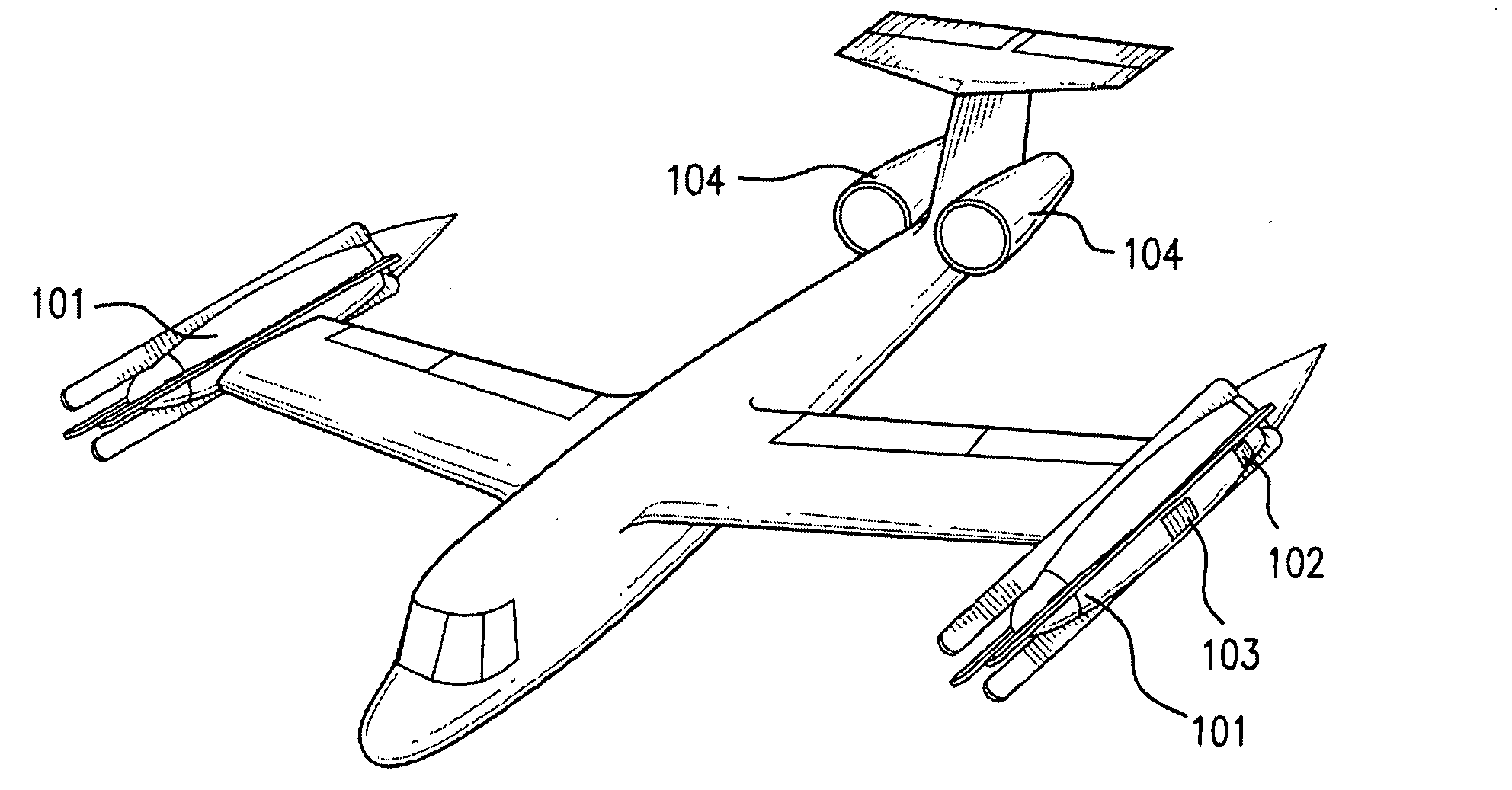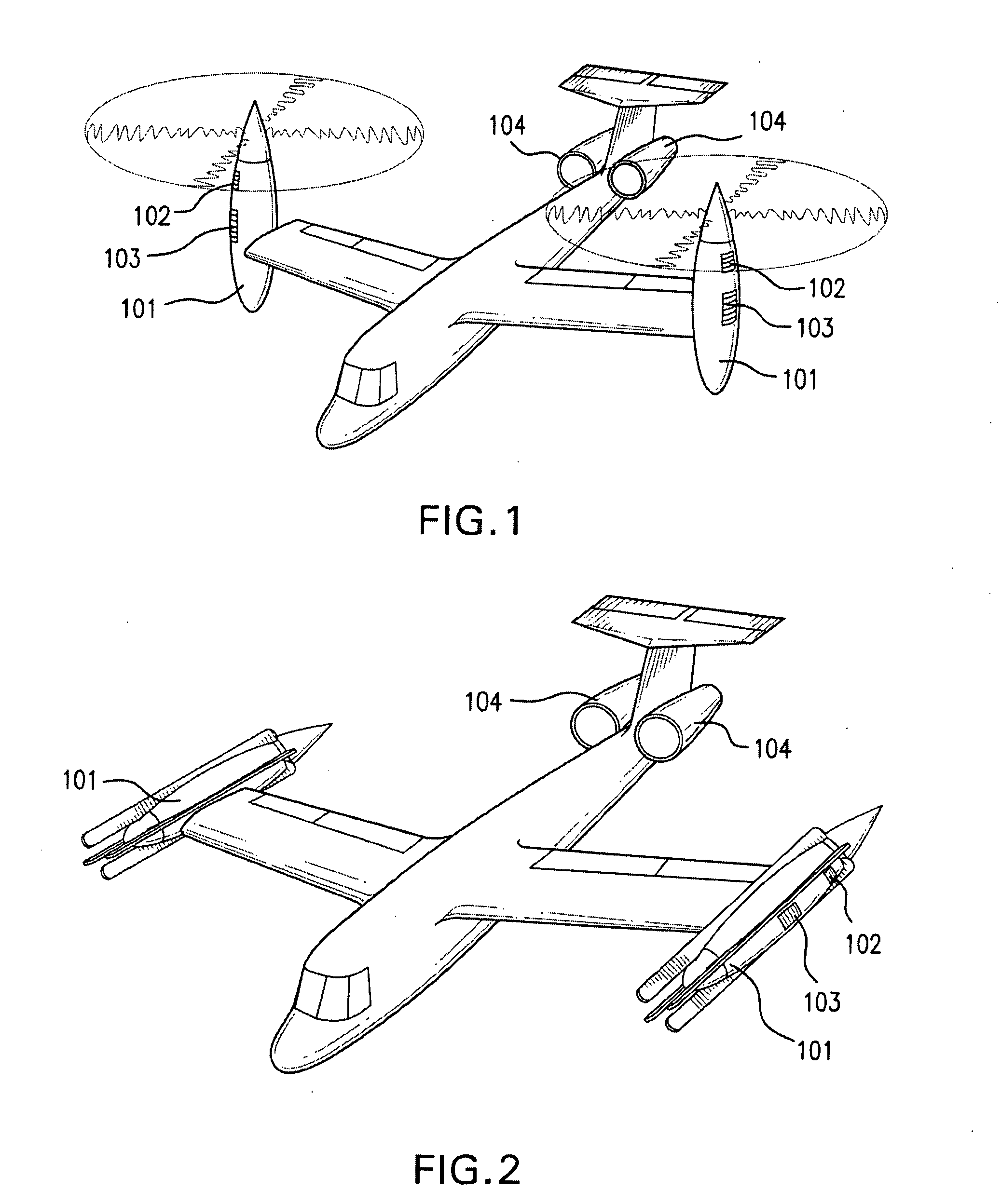Forward (Upstream) Folding Rotor for a Vertical or Short Take-Off and Landing (V/STOL) Aircraft
a vertical or short take-off and landing aircraft and forward (upstream) technology, applied in the direction of rotocraft, vertical landing/take-off aircraft, propellers, etc., can solve the problems of hydraulic actuators that are less reliable, prone to wear and leakage, and require additional hardening and lengthening of pylons for folding rotors. to achieve the effect of reducing or eliminating cg shift, reducing drag on the wings, and increasing the capability of til
- Summary
- Abstract
- Description
- Claims
- Application Information
AI Technical Summary
Benefits of technology
Problems solved by technology
Method used
Image
Examples
Embodiment Construction
[0021]This concept is a member of the well known Tilt-Rotor family of vertical / short take-off aircraft. It is a variant of the folding tilt-rotor aircraft of Ref. 1, of which I am co-inventor.
A. TAKE-OFF CONFIGURATION FIG. 1
[0022]Rotors (4 bladed in this embodiment) are mounted on tip-pods 101 at the wing-tips, inter-connected by the usual shaft-drive. Rotor axes can tilt from 30 deg. forward of vertical to 90 deg. aft of vertical. Rotors are driven by shaft-engines mounted in the tip-pods. Inlet air enters thru streamlined louvers 102. Exhaust air exits thru the lower louvers 103. These louvers are closed in cruise flight into a low-drag streamlined position.
Additional engines 104 are mounted at the rear of the fuselage. These engines are used during transition and cruise flight and are at idle thrust during vertical take-off.
B. CRUISE CONFIGURATION FIG. 2
[0023]The rotor blades are folded into the tip-pods and locked securely. The shaft-engines are stopped and all louvers closed. T...
PUM
 Login to View More
Login to View More Abstract
Description
Claims
Application Information
 Login to View More
Login to View More - R&D
- Intellectual Property
- Life Sciences
- Materials
- Tech Scout
- Unparalleled Data Quality
- Higher Quality Content
- 60% Fewer Hallucinations
Browse by: Latest US Patents, China's latest patents, Technical Efficacy Thesaurus, Application Domain, Technology Topic, Popular Technical Reports.
© 2025 PatSnap. All rights reserved.Legal|Privacy policy|Modern Slavery Act Transparency Statement|Sitemap|About US| Contact US: help@patsnap.com



